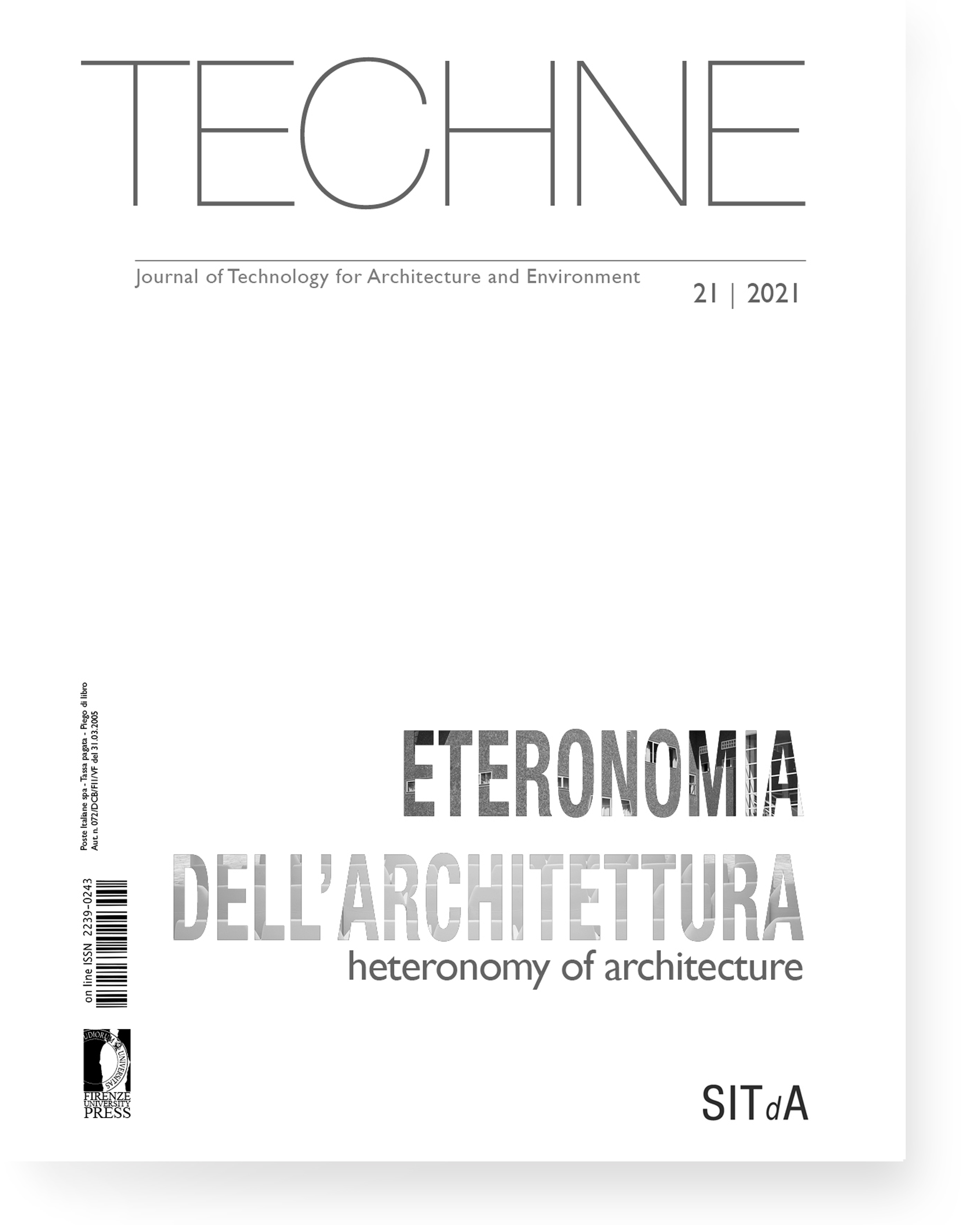Published 2021-02-23
How to Cite
Abstract
A red thread intertwines the narration of the characters who marked the history of architecture in the last century. On the one hand this thread leads to considering the architect as the victim of a “cynical and cheating” world to which he seems inevitably subjected; on the other hand, to reconsidering the role of some important architects who gave architecture a “political” meaning, that went beyond the object of his own production.
In demonstrating this thesis, the author of the book resurrects slogans such as «architecture as goods at the service of the capital» or as “supplying” architects (Benjamin) or those who «conform to habit, who wearily repeat the already known», in a sort of servile compliance with laws of capitalism and economics.
The text of Biraghi thus tells the story of a discipline, namely that of architecture, through those characters who most represented a way of operating strongly inspired by ideology and criticism of the real world, to find desecrating or clearly utopian forms, despite everything, of reading phenomena and proposing alternative exits. The list of quotes and characters (known and less well known) who represented this nonconformist attitude is very long and this short text would not be enough to underline how thorough the research carried out by the author has been.
Contextually the body of the bibliographic apparatus should be pointed out, which attests the importance, within the editorial panorama, of a current of thought linked to the principle of disciplinary “autonomy”, and which makes us understand how much the detachment from reality and its development dynamics has been deliberately planned and achieved. In particular, the figure of Pier Vittorio Aureli is highlighted, and rightly so, as emblematic of a provocative attitude taken to the extreme.
The reading of this story is then accompanied into the background by the figure of Manfredo Tafuri, whose quotations always appear very lucid, but a lucidity that sometimes reveals a slight cynicism; as if, having understood the turn that the intellectual architect was taking, he would sit in a corner waiting to watch him die. Death which Tafuri himself clearly announces and which, unfortunately, took place: «the death of architecture as a system of practices, as a profession that traditionally holds at its core the idea of designing and organizing space».
Nevertheless, it was not death, but a radical change that has yet to be completed. The awareness arises that the intellectual architect can no longer be allowed to perpetuate his function as a critical observer, without participating by right, and by virtue of his training opened to confrontation and strongly generalist (the schools of architecture have opted for a so-called “fan” training), to the dynamics of reconstruction of his own country.
Of course, it is obvious to say that the figure of the architect is inextricably linked to his “political” role, but it is worth reiterating it even in the event that it is posed with a spirit of service. A quote from Giancarlo De Carlo reveals the reasons why architecture hardly interests anyone, clients and much less as “goods”: «it doesn’t interest ordinary people because it doesn’t offer anything that interests their expectations».
Therefore, according to a more current orientation and corresponding to the pro-European logic, the “necessity”1 as a “political” category should be re-evaluated today: the need to build and rebuild, the need to change housing models, the need to design open spaces, the need to work socially to sharing our ideas, the need to appropriate new technologies in order to take the role that belongs to us, the need to confront ourselves with current issues: two of which, environment and health.
In the final part of the book, the author begins to play in this new reality, trying to extricate himself from the “complexities and contradictions” that emerged at the beginning of the century: division of labor and specialisms, processes, technologies, loss of authorship. What emerges as an interpretation is the split between the figure of the architect-producer and the architect-supplier, the first capable of having a leading position within the design processes, the other as a mere executor of products (goods) within an economic dynamic aimed at satisfying substantially ordinary needs.
After all, Cristiano Toraldo di Francia in an interview that traces the years of his militancy as an intellectual architect, disenchantedly affirms that «mass intellectual production is a real thing, in a certain sense utopia has come true»2. What is certain is that the history of architecture had been written through this double register, and looking at the producers alone, we would have missed many architectural works made by supplying architects, without giving up anything of their quality or professional ethicsas their primary objective to respond to people’s expectations, despite the market conditions to which they were subjected.
We refer to figures such as Luigi Moretti, Giuseppe Vaccaro, Marcello Piacentini, Mario Fiorentino, Roberto Gabetti and Aimaro Isola, and others who have worked with awareness within a productive logic without giving up shares of quality and professional ethic. A question arises: could the excess of introspective and self-referential analysis have contributed to the loss of interest in architecture?






